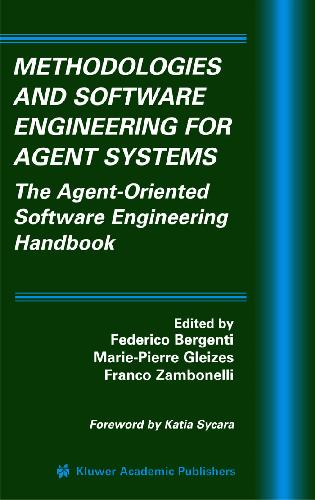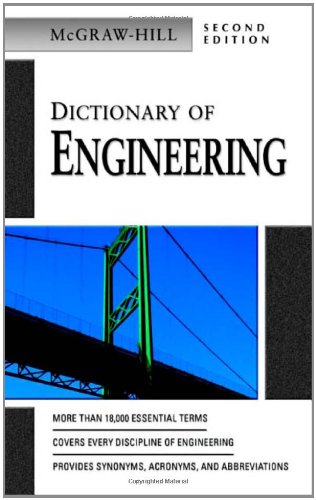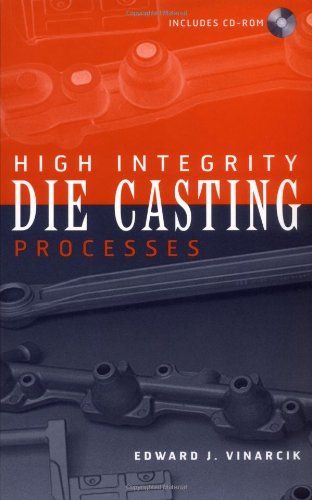Bergenti F. (Ed), Zambonelli F. (Ed), Gleizes M. P. (Ed)0792372107, 0792374509, 1402070578, 1402070616
Table of contents :
Contents……Page 6
Contributing Authors……Page 12
Foreword……Page 22
Introduction……Page 28
Part I Concepts and Abstractions of Agent-Oriented Software Engineering……Page 32
Introduction……Page 34
1. Introduction……Page 36
2. A Brief History of Software Development……Page 38
3. Agents and Multiagent Systems……Page 40
4. Agent-Based Software Development……Page 44
5. Critical Directions……Page 47
6. Conclusions……Page 48
1. Introduction……Page 50
2. Software Agents vs. Software Components……Page 51
3. Semantically Reusing Agents and Components……Page 56
4. Discussion……Page 61
1. Introduction……Page 64
2. Analysis……Page 66
3. Design……Page 72
4. Implementation……Page 86
5. Testing……Page 88
7. Conclusions……Page 92
Part II Methodologies for Agent-Based Systems Development……Page 94
Introduction……Page 96
1. Introduction……Page 100
2. Gaia in a Nutshell……Page 101
3. Gaia v.2……Page 106
4. The ROADMAP Methodology……Page 110
5. Extending Gaia with AUML……Page 115
7. Conclusions……Page 118
1. Introduction……Page 120
2. Overview……Page 121
3. Formal Tropos……Page 125
4. Socially-Based MAS Architectures……Page 129
5. Goal Models……Page 133
6. Conclusions……Page 136
1. Introduction……Page 138
3. Analysis Phase……Page 139
4. Design Phase……Page 148
5. agentTool……Page 153
7. Comparison with other Methodologies……Page 155
1. Introduction……Page 158
2. The Evaluation Framework……Page 160
3. Evaluating Gaia……Page 165
4. Evaluating Tropos……Page 169
5. Evaluating MaSE……Page 174
6. Summary and Conclusion……Page 178
Part III Special-Purpose Methodologies……Page 182
Introduction……Page 184
1. Introduction……Page 188
2. ADELFE Methodology Overview……Page 189
4. Final Requirements……Page 192
5. Analysis……Page 194
6. Design……Page 196
7. ADELFE Tools……Page 203
8. Comparison with other Methodologies……Page 204
9. Conclusion……Page 205
1. Introduction……Page 208
2. The MESSAGE Methodology……Page 209
3. Analysis/Design Travel Agent Case-Study……Page 214
4. Considerations on Low-Level Design……Page 222
5. Evaluation of MESSAGE……Page 224
6. Conclusions……Page 225
1. Introduction……Page 226
2. The SADDE Methodology……Page 227
4. Step 1: The EBM……Page 230
5. Step 2: The Electronic Institution……Page 234
6. Step 3: The ABM……Page 237
8. Cycle P4 through Evolutionary Computing……Page 241
9. Conclusions……Page 245
1. Introduction……Page 248
2. System Specification……Page 251
3. Architectural Design……Page 253
4. Detailed Design……Page 257
5. Tool Support……Page 259
6. Experiences with Using Prometheus……Page 261
7. Related Work……Page 262
8. Future Work……Page 265
Part IV Tools and Infrastructures for Agent-Oriented Software Engineering……Page 266
1. Introduction……Page 268
2. Agent UML Purpose……Page 269
3. Current Work in Agent UML……Page 270
4. Future Directions in Agent UML……Page 283
5. Conclusion……Page 287
1. Introduction……Page 290
2. FIPA……Page 291
3. FIPA-Compliant Agent Infrastructures……Page 293
4. JADE……Page 295
5. Conclusions……Page 303
1. Introduction……Page 304
2. Coordination in MAS……Page 305
3. Infrastructures for MAS Engineering……Page 309
4. Modelling Coordination Infrastructures with Activity Theory……Page 314
5. Engineering MAS with Coordination Infrastructures……Page 321
6. An Example of a Coordination Infrastructure……Page 324
7. Discussion……Page 326
Part V Non Traditional Approaches to Agent-Oriented Software Engineering……Page 328
Introduction……Page 330
1. Introduction……Page 334
3. Developmental Biology as an Inspiration……Page 336
4. Towards Programming Languages……Page 340
5. Pervasive Computing……Page 346
1. Introduction……Page 352
2. Characterization of Emergence in Synthetic Systems……Page 356
3. An Example of a MAS Technology using Emergence……Page 358
4. Flood Forecast by Cooperative Self-Organizing Agents……Page 362
5. Software Engineering Requirements for Self-Organizing MAS……Page 368
6. Conclusion……Page 371
1. What is Swarming?……Page 372
2. Where would You Want to Use Swarming?……Page 380
3. Why does Swarming Work?……Page 384
4. How can We Apply these Principles in Engineered Systems?……Page 395
5. Conclusion and Prospect……Page 406
1. Introduction……Page 408
2. Open Computational Systems……Page 410
3. Online Engineering……Page 413
4. Methodological Benchmarking……Page 417
5. Concluding Remarks and Future Work……Page 419
Part VI Emerging Trends and Perspectives……Page 422
Introduction……Page 424
1. Introduction……Page 426
2. Examples on Ubiquitous Computing……Page 428
3. Background……Page 429
4. Dimensions of Ubiquitous Computing……Page 432
5. Contributions of Agents to Ubiquitous Computing……Page 435
6. Conclusion……Page 442
1. Introduction……Page 444
2. The Grid and Bioinformatics……Page 445
3. Agents in Bioinformatics Grids……Page 447
4. Agent-Based Service Discovery for Grid Computing……Page 450
5. Architecture Design……Page 454
6. Performance Analysis……Page 457
7. Related Work……Page 459
8. Conclusion and Future Work……Page 460
1. Introduction……Page 462
2. Agents as a New Modeling Paradigm……Page 464
3. Methods for Building Multiagent Systems……Page 466
4. Tools for the Implementation, Deployment and Execution……Page 472
5. Application Opportunities……Page 478
6. A Roadmap for Agent-Oriented Software Engineering……Page 479
7. Conclusions……Page 481
References……Page 482
E……Page 534
S……Page 535
Z……Page 536







Reviews
There are no reviews yet.